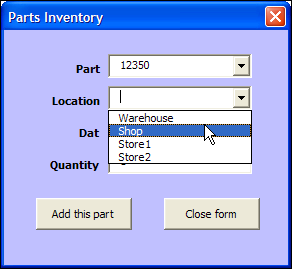

Select the Macro from the drop-down list in the Macro Group in the Developer Tab. So, this is my favourite part of the whole process.
How to write a macro in excel 2011 for mac code#
Putting All Of The VBA Code Together And Running The Macro This action simply creates a memory container in Excel for these values.

Notice Excel will insert the End Sub automatically for us to end the Sub Routine – or Macro Declaring Variablesįirst of all, we need to declare a number of variables. Next, type Sub then the name of your Macro, in this example, I am naming it ListAllFiles Macro Mondays -Creating and Updating Your Personal Macro WorkbookĬreate A Shortcut To Your Personal Excel Macro Workbook Starting The Macro Why Is My Personal Macro Workbook Not Loading Automatically?
How to write a macro in excel 2011 for mac free#
So, feel free to read more about using your Personal Macro Workbook in my recommended blog posts below. More Information About Your Personal Macro Workbook As a result, it is really easy to keep all off your Excel VBA Macro’s together in one place. The Excel VBA code stored in your Personal Macro workbook will be made available in any active Excel session that you open. While, in contrast, if you want to be able to reuse the code then insert the new Module into the Personal Macro Workbook. If we want to only use this code in this particular workbook then select to insert a Module within this workbook. We have two choices as to where to store the code. This allows us to Insert a new Module to store our VBA code. You can either do this by hitting ALT+F11 or by selecting the Developer Tab | Visual Basic. The For Loop is typically used to move sequentially through a list of items or numbers.įirst of all, we start this Macro by opening the Excel Visual Basic Editor. The Macro uses the Excel For Loop which is probably one of the most powerful programming techniques. So, this is where we have a bit of fun with VBA so let’s get back to some awesome code and learn to use the Excel For Loop. If you prefer to use a non-VBA or Excel Macro version of this process then you can check out my #formulafriday blog post here which uses the FILES function to extract a list of files in a folder. It is just simply a great way to list all files in a directory. Use it to see details of how many files and sometimes duplicating or older files you have. Similarly, if you have multiple files and folders you can use this method to carry out some housekeeping on folders and subfolders. Similarly, we can also extract extra attributes about the files we are interested in such as the size, the date last modified and by who if we so wish. I find this a really useful macro which uses the Excel For Loop to list all files in a folder or directory. Hello, Excellers I am excited to share with you some cool VBA Macro fun.


 0 kommentar(er)
0 kommentar(er)
